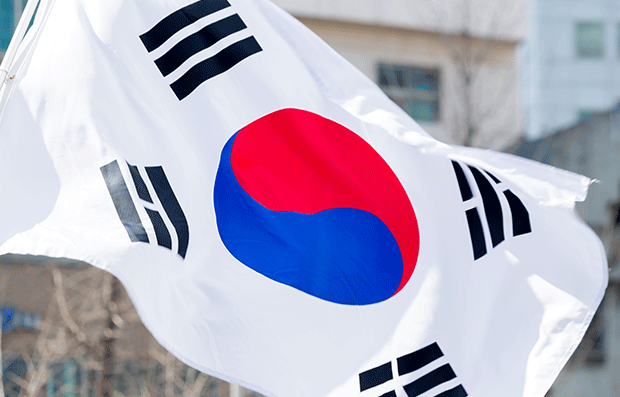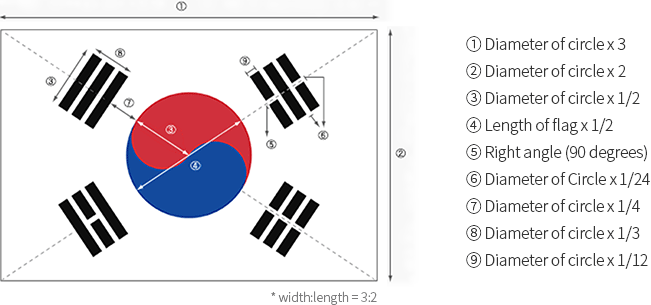PM visits COVID-19 vaccination site
- administrator
- 2021.12.24
- Hit 1701
Prime Minister Kim Boo-kyum visits the coronavirus vaccination site at an outlet of the Hanaro Medical Foundation in Seoul on Dec. 24, 2021.

Following the trend for modern states to adopt national flags, the decision to create a national flag for Korea emerged with the ratification of the Korea-United States Treaty of 1882. No accurate records remain of the Korean flag chosen for use at the signing ceremony; however, some argue that the flag was si milar to the ensign flag featured in the Flags of Maritime Nations issued by the U.S. Navy Department’s Bureau of Navigation and found in 2004. In his capacity as Envoy Extraordinary and Plenipotentiary under King Gojong, Park Yeong-hyo kept a record of his diplomatic mission to Japan in 1882.
In his capacity as Envoy Extraordinary and Plenipotentiary under King Gojong, Park Yeong-hyo kept a record of his diplomatic mission to Japan in 1882. According to his journal, known as Sahwagiryak, in September of that year while aboard the ship to Japan, Park created a four-trigram flag with a taegeuk circle (instead of the flag with eight black bars that had been used prior to 1800). The flag was used from September 25, 1882, according to Park’s report to the government on October 3 of that year. By royal order on March 6, 1883, King Gojong promulgated that Park’s flag with a taegeuk circle in the center and four trigrams around it (the flag named Taegeukgi) be the national flag. However, due to a lack of specific guidelines, the flag design took different forms. On June 29, 1942, the Provisional Government issued a national flag style guide to ensure that subsequent flags would be created in a consistent manner. Despite these efforts, however, ordinary people were unaware of these guidelines.After the establishment of the Republic of Korea on August 15, 1948, the government felt an increasing need to standardize flag construction. Thus in January 1949, it formed the National Flag Correction Committee, which announced the National Flag Construction Guidelines on October 15 of that year. A number of regulations were later implemented, providing for the systematic management of the flag: the Act on the Flag of the Republic of Korea, enacted in January 2007; the Enforcement Decree of the Act on the Flag of the Republic of Korea, in July 2007; and the Regulations on the Hoisting, Management, and Promotion of the National Flag in September 2009 (by instructions from the Prime Minister).
The Taegeukgi consists of a white background, a red and blue taegeuk circle in the center, and four black trigrams (collectively called geongongamri), one in each corner of the flag. The white background represents brightness, purity, and peace, qualities that are highly valued by the people. The taegeuk, which has long been a commonly used motif, denotes the harmony between the negative cosmic forces (yin : blue portion) and the positive cosmic forces (yang : red portion), depicting the truth of nature that all things are created and evolve through the interaction of yin and yang. The four black trigrams are specific representations of the movement and harmony of these forces. In detail, the geon symbolizes the sky, the gon the earth, the gam water, and the ri fire. Together, they create harmony around the taegeuk mark. In short, the Taegeukgi flag embodies the vision of the Korean people who, like the universe, seek continuous creation and enrichment. By upholding the spirit and significance of the Taegeukgi, the people seek to realize unity and unification and contribute to the happiness and peace of humanity.

I, standing before the noble Taegeukgi, solemnly pledge allegiance to the Republic of Korea, to its glory, liberty and justice.
Prime Minister Kim Boo-kyum visits the coronavirus vaccination site at an outlet of the Hanaro Medical Foundation in Seoul on Dec. 24, 2021.